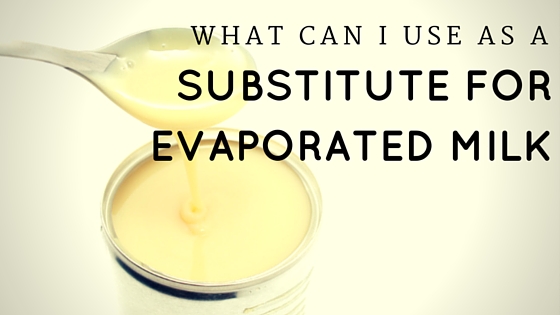Anyone who did any cooking before the 1990’s rolled around will probably remember evaporated milk well. It was an ingredient found in many recipies, and was well stocked in kitchens everywhere. This was partly a result of the economic crisis and gas shortage of the 70’s – with resources in tight supply, condensing milk by evaporating some of the water content was a good way to make milk stretch a little bit further. It was also a mark of where food preservation and transportation technology was – evaporating and canning milk was the best way to make it last longer and transport it further.
These days, you’ll be hard-pressed to find a millennial who has ever heard of evaporated milk, let alone keeps a can in their pantry. Social attitudes about food have changed drastically, and today’s fashionable foodies wouldn’t dream of eating canned…well, anything. Which is a shame, because there are some truly wonderful foods to be found in cans. Like evaporated milk!
Evaporated milk is just regular milk that has had some of the water content boiled off. You can think of it as a richer, milkier, slightly caramelized milk. It’s milk plus, and it’s often called for in recipes that need that extra little bit of richness. Especially desserts. So what do you do when you want to bake a Tres Leche cake in the middle of the night and the only place that stocks evaporated milk closed hours ago? Don’t worry, we have an evaporated milk substitute for any occasion!
Make Your Own Evaporated Milk
Probably the best way to fill an evaporated milk requirement is to make your own. It’s surprisingly easy and straight-forward: take some regular milk, and boil it down. Specifically, you want to boil 2.5 of milk down to one cup of evaporated milk. The only real trick here is to make sure you don’t burn the milk too badly. It should be a little bit browned, and have some warm caramel flavors, but not so brown that it doesn’t taste like milk anymore. Use low to medium heat and stir frequently to keep from burning it.
Make Your Own Evaporated Milk With Milk Powder
As discussed, one way to do this is to remove the water from milk by cooking. It makes sense then that you could also simply mix the some amount of solids – i.e. milk powder – to the needed amount of liquid. You would read the label o f you milk powder and determine how much is needed to make a cup of milk then add to that amount of powder 60% less water. If I need a cup of evaporated milk, I would use the amount of powder to make 2.5 cups of milk and add to it 1 cup of water. Mix well and there you have it.
Milk and Half and Half
A simple combination of milk and half-and-half can fill in as an evaporated milk substitute in many recipies. Mix 3/4th of a cup of regular milk with 1/4th of a cup of half-and-half for every cup of evaporated milk you need. This is a much simpler way to get to a working evaporated milk substitute than evaporating it yourself, but you will lose some of the richness that comes from cooking the milk. This approach is best used in recipes where the evaporated milk would have been overwhelmed with stronger flavors anyway.
Almond Milk/ Soy Milk
Sometimes, the issue isn’t availability, it’s palatability. For people who have dairy intolerances, milk in any form is a no-no. In that case, it’s often possible to use vanilla flavored soy or almond milk. You’ll want to use about 3/4ths the amount of almond or soy milk as evaporated milk. Also, keep in mind that soy milk separates into liquids and solids under heat, so if you’re using it in a sauce, try to add it after you’re done heating!






I need a substitute for evaporated filled milk in a cheesecake recipe I have made for over 40 years. The item I used in the past has been changed and will not beat into peaks. Can I use half and half or whipping cream as a substitute? Any advice you could give me would be very appreciated. Thank you.
Hi Diane,
Yes, you can try those, but they may result in the final product having a little less density. I am not sure what you were using, but if the cream whips up in a less dense fashion it could make for a lighter cheesecake. Probably worth a try, though.
Eggs and sugar also will beat into peaks. This will certainly make a different cheesecake though.
Let us know has it works out.
BR
Matthew
Hi Diane. If you are talking about a cheesecake made with Milnot, I noticed that, too the last time I made it, but the recipe came out fine.
When you say “regular” milk, are you talking about whole milk? or 2%? or skim?
Thanks!
Hi Kristen,
Yes, any fat level.
Thanks for asking!
BR
Matthew
The picture looks like sweetened condensed milk. And as a millennial both I and most people my age know what evaporated milk is and keep at least a little bit in our pantries.
I know when getting meringue to peak it helps to put a glass bowl in the freezer. Using this bowl could help when mixing your filling.
Why is mixing milk with half and half recommended? What about using just half and half?
Hi Susan – It is mostly to get the density right. Try the half and half alone. Probably won’t make that much difference.
Not to sound dumb,but I don’t understand the 3/4 thing in the soy/almond milk section. I’m not good with percentages, and only know how to use measuring cups. Please clarify. I am using the vanilla almond milk to replace 1 can of evaporated milk for a baked mac n cheese. Thanks.
Need non dairy replacements for granddaughter! Please help. I know how to make whipped cream from coconut milk. Need to know replacement for other baking!( like evaporated milk) Thanks!😄
Can I do this with soy or almond milk? By just reducing?
Hi Jamie,
Yep, should work. Just reduce gently. I would try almond first as Soy right get a little beany tasting vs almond that would be a little nuttier. I think the nuttier would be better, but depends not eh applications. Let me know how it goes! Best Wishes and Happy Holiday! Matthew
HI Jamie,
AS ou note – use almond or soy mil (or other vegetarian milk, reduce about 40%. Best wishes and happy holidays! Matthew
should I use sweetened condensed or regular milk for a substitute?
I have condensed milk & need evaporated milk. Can I just add some water to the condensed milk. If so, what equivalents do I use?
Can 1% milk be mixed with something for a good sub?
Hi Dee, try adding milk powder. Evaporated milk is milk with 60% of the water removed. So adding milk powder might do the trick.
Hi Matthew,
Can any form of coconut milk be used as a substitution for regular milk? I am Lactose intolerant.
It worth a try Katrina. Make sure the fat is either skimmed off or well mixed throughout.
I find more convenient to use 1 can of sweetened condensed milk instead of the evaporated milk and the sugar. It makes it a little fluffier also.
Is there a way to use either dry milk, or non – dairy coffee creamer?
Hi Carol,
If you want it in a powder not really. This takes some special equipment that most folks simply would not have in a home. Easiest to just purchase if you can.
BR
Matthew
Millennials who cook have heard of evaporated milk…it’s an ingredient in plenty of recipes.
Asking questions are in fact nice thing if you are
not understanding something entirely, however this article provides good understanding even.
I need to know if, when I’m making pumpkin pie, I can use skim milk and some heavy cream instead. If I can, what would the proportions be?
I have to drink coconut milk. Can I just use it in place of canned milk
I like the sweeten condensed milk comment that eliminates the sugar. You can get that fat free now, too.